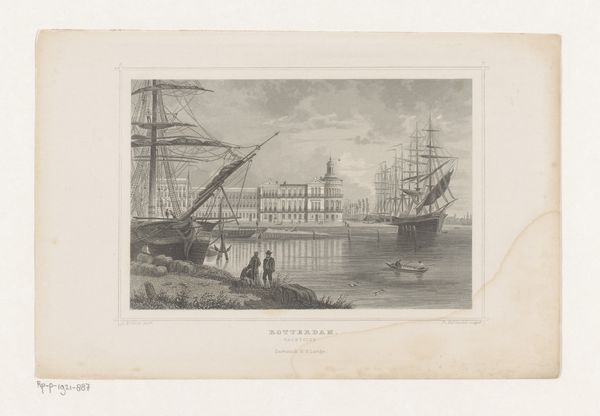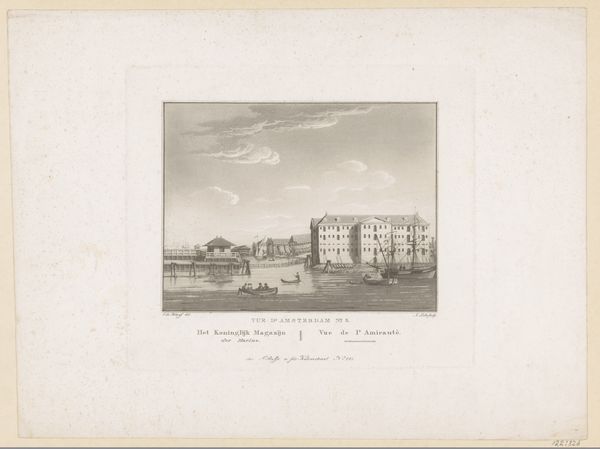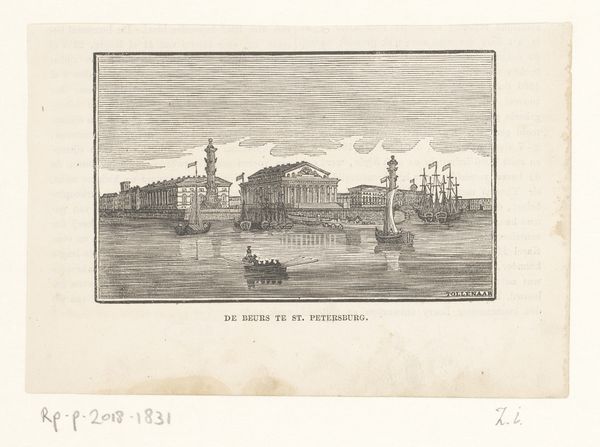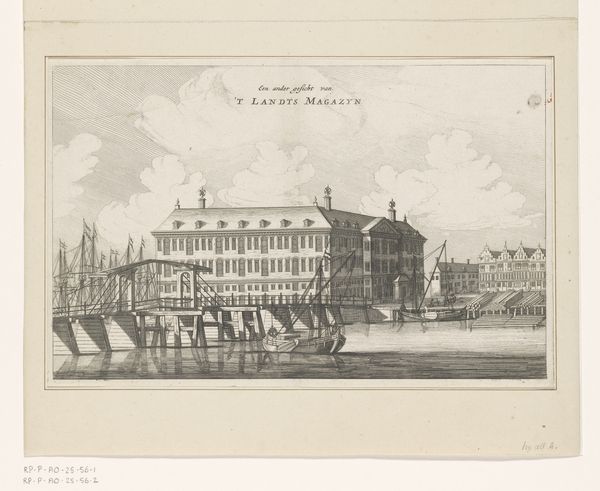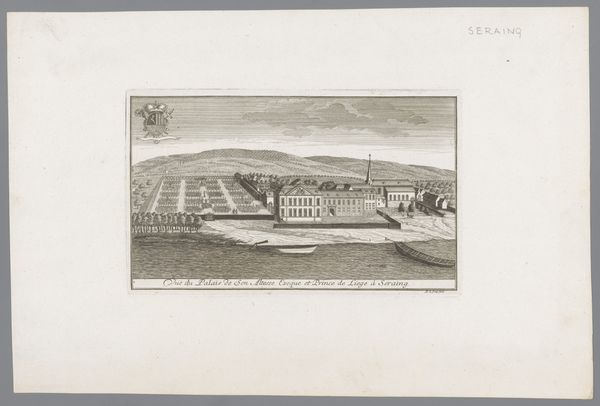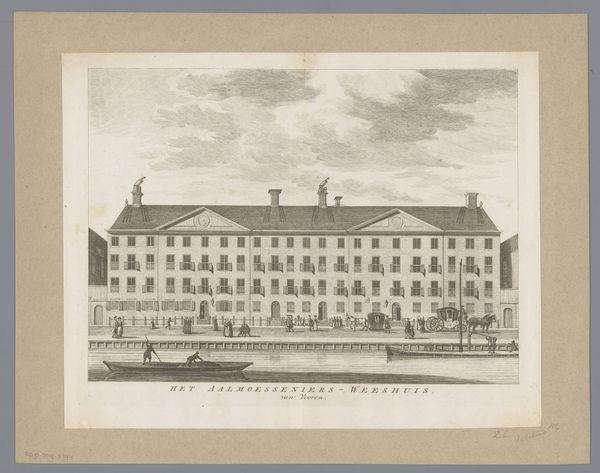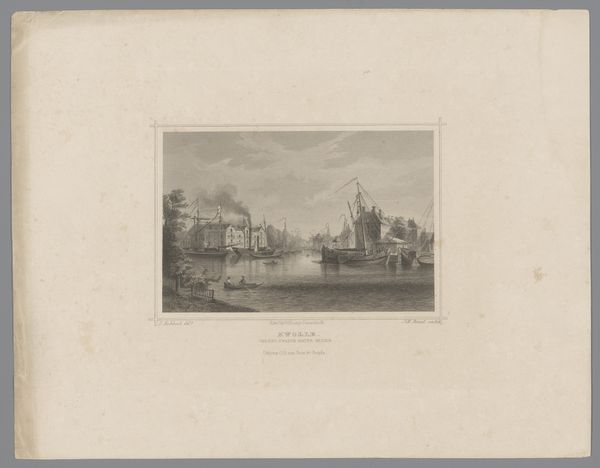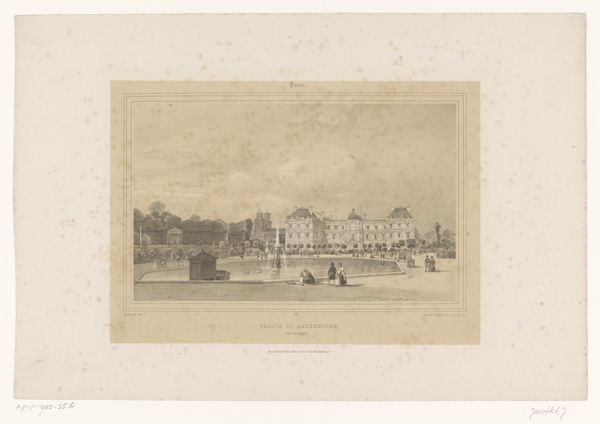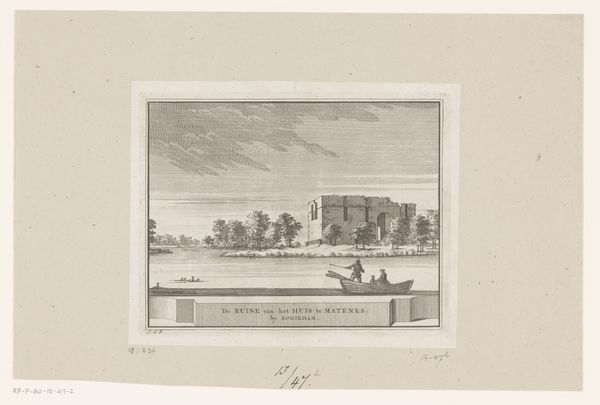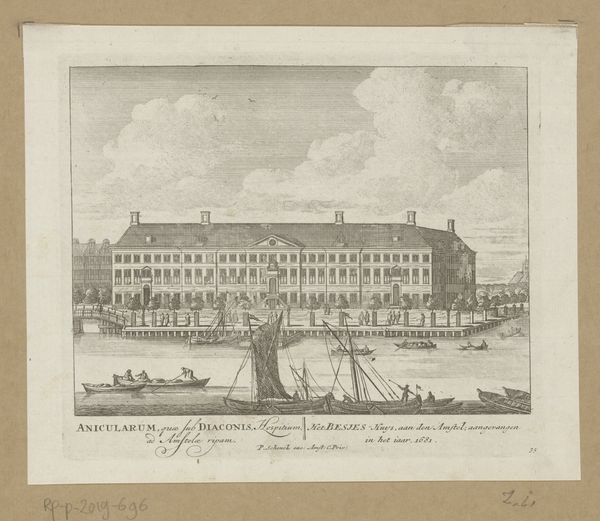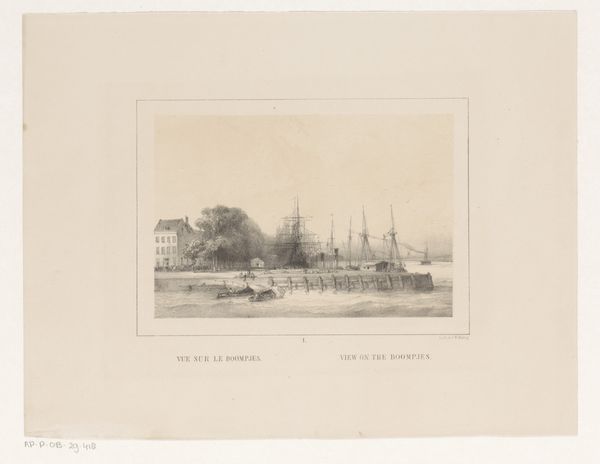
print, engraving
#
dutch-golden-age
# print
#
landscape
#
cityscape
#
engraving
#
realism
Dimensions: height 166 mm, width 254 mm
Copyright: Rijks Museum: Open Domain
Curator: Let's delve into this print, a view of 's Lands Zeemagazijn in Amsterdam, made in 1863 by L. Oeder, through engraving. It’s an interesting snapshot of a specific place at a specific moment. Editor: Yes, it depicts the naval warehouse. It's quite a detailed cityscape. What strikes me most is how the reflection on the water almost mirrors the structure above. What do you see in this piece? Curator: For me, the engraving speaks volumes about the means of production and the economic context. Consider the labour involved in creating such a detailed print. Each line meticulously etched to replicate the architecture, the ships...the warehouse itself! How do materials shape the narrative? Editor: So you’re thinking about the paper, the ink, and the engraver’s tools as essential to the message, not just neutral components? Curator: Precisely. These are not merely representational. They represent labour, skill, and the economics of 19th-century printmaking. Prints like these were often commissioned. For what purpose were they being commissioned and who could afford them? The materials carry those implications. How does it relate to Dutch Golden Age painting? Editor: I see what you mean. While it has similar themes as paintings from that period, the act of engraving is more of a commercialized form of art. But I guess it shows that interest in these cityscapes were still alive at that time. I never thought about prints this way, and how the materials used reveal a lot about society back then! Curator: Exactly! Reflecting on materiality opens up pathways to interpreting the history embodied in artworks.
Comments
No comments
Be the first to comment and join the conversation on the ultimate creative platform.
